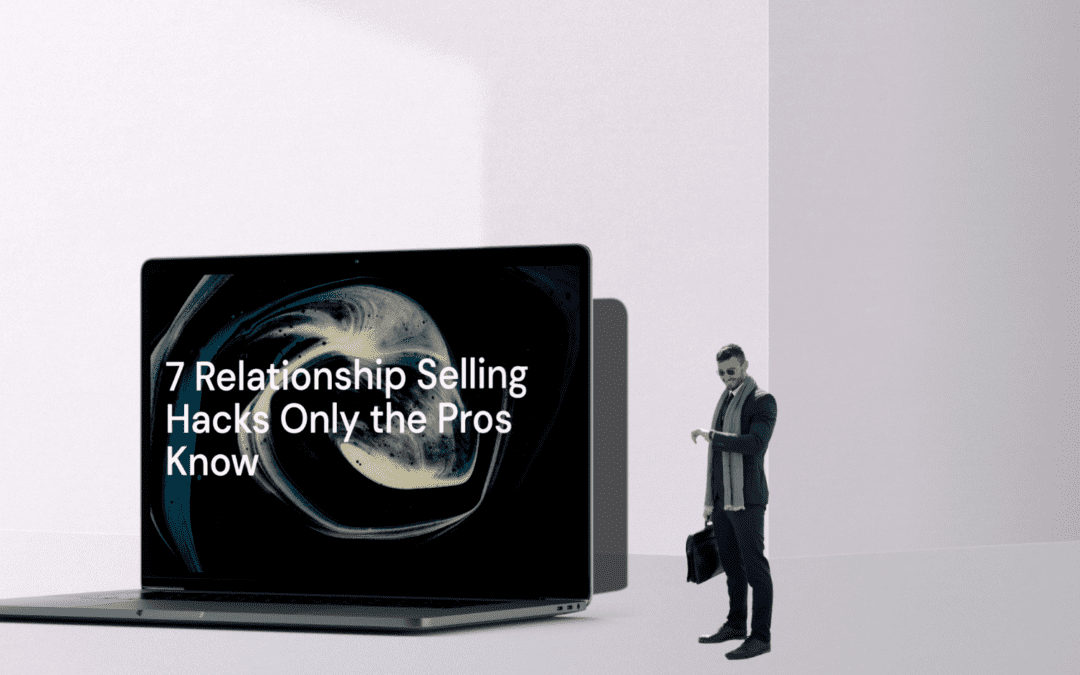Relationship Selling Process Hacks:
Now that you’ve decided that relationship selling is best practice for you, let’s look at the relationship selling process. Relationship selling pros rely on seven factors to help them achieve success. If you follow these tips, you, too, can be a relationship selling pro.

1. Research your prospect and prepare ahead of time
If you want to make a good first impression on your prospect, it’s important to make sure you know who you’re meeting. You need to research everything you can, not just about their company, but about them as individuals as well. You’re building a long-term relationship with your prospect or client, so the better you know them, the quicker you’ll be able to anticipate their needs and their wants. This is probably one of the most important factors to successful relationship selling. If you don’t know your clients or prospects well enough, they’ll feel it. If you’re reading off cue cards about them on sales calls, they’ll hear it. You won’t be building any trust with clients if you don’t know them. So research, research, research.
2. Listen more than you speak
We’ve touched on this before and probably will again because it’s that important. Active listening shows empathy. Empathy encourages trust. Trust makes sales. As noted in the first point, you must research your prospect prior to engaging with them, but research can only get you so far. This is why you must listen to what they say, but also to what they don’t say. Active listening is key to understanding your client and their pain points, and the more you listen, the higher chance you have of closing the deal. Studies show that salespeople who spend less time talking and more time listening have higher closing rates. One of the reasons for this is that when you steamroll through a conversation and spend more time talking, clients have a harder time trusting you. Why would they want to be a repeat customer when you’re too busy pitching to actually hear them?

3. Give targeted advice to your prospect’s goals
When you pay attention to what your prospect is saying to you, you can give them better advice. Target advising is a great way to once again build that client’s trust. If they know that you’ve been paying attention and have discovered ways to help them, specifically, they will trust in you and your product or service. So be sure that through your research and practicing active listening, you’re able to come up with some targeted advice to help them achieve their goals. If during a conversation, you’ve heard them mention that X is a massive pain point, you can use that to suggest Y to help with their problem. Pay attention, and take notes if necessary.


4. Follow up by providing valuable information
We know that we seem to be saying the same things in all of these points, but that’s because they all tie in together. It’s difficult to master one without also mastering the others. Providing valuable information to your clients or prospects will, again, build that trust that consumers and companies are so desperately seeking these days. After your initial phone call, do some more research and take note of things you think would be valuable for them. You can follow up about this information in an email or by phone, but phone calls are more personal. So if possible, always opt for a call rather than an email.
5. Be honest and transparent about what you can and cannot do
If your client or prospect is asking for or needs something that you are unable to provide, do not promise them that you can. Breaking the trust of a client is the last thing you want to do, so it’s important that you’re always transparent with them.


6. Be patient, reliable, and genuine (pre-and-post sale)
Reliability is one of the main things clients and prospects are looking for. They want to know that you are someone they can count on and call on at any time, even after the sale is finalized. As the saying goes, patience is a virtue. Remember, these companies are likely spending a lot of money on your product or service. Trying to rush them through a sale will get them nowhere. Being patient as they ask questions and debate whether to purchase will let them know that you understand what a big undertaking is. And, of course, be honest. Don’t let them think they’re talking to a fake persona who’s just trying to sell them something. Yes, you want that sale, but you’re also here for them before and after it.
7. Know when to walk away gracefully
Be persistent, but don’t be a pest. If they’ve made it painfully clear that they are not interested, do not continue to pester them. Not only will they not buy your product or service, but they will also likely talk to others in their line of business and advise them not to buy from you. Knowing when to walk away gracefully will leave the prospect with respect for you and your company. Maybe they’re not in the market for your product now, but if you’ve made a good impression and walked away when you should, they might call you back when they’re in need.

How we do it at Wingmate…
Relationship selling is a great marketing tactic to not only sell your product or service but also to retain customers. Prospects are looking for long-term relationships these days, and are far more likely to return to a company that they trust and have a good relationship with. If you follow these tips and tricks, you’ll be well on your way to becoming a relationship selling pro.













